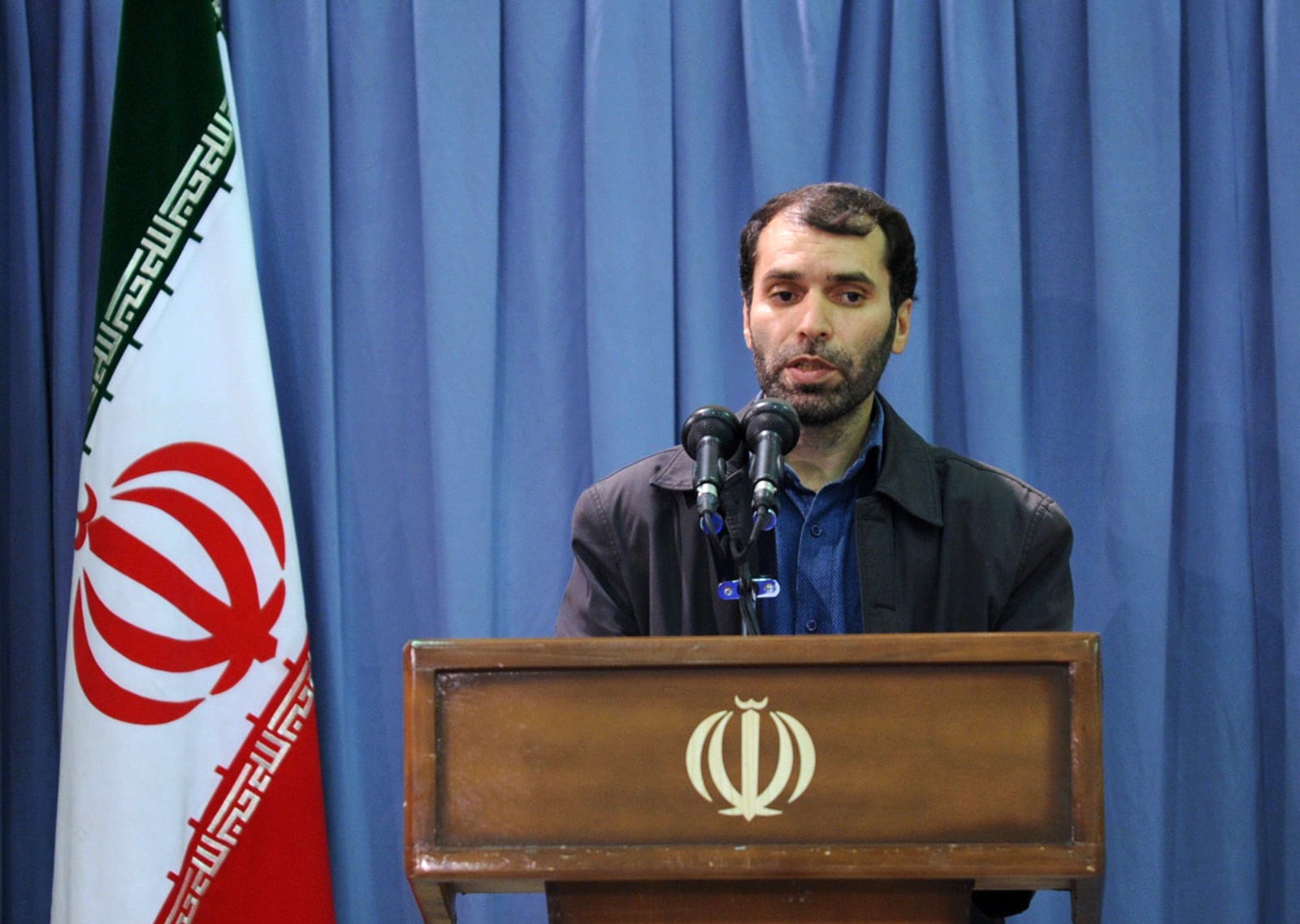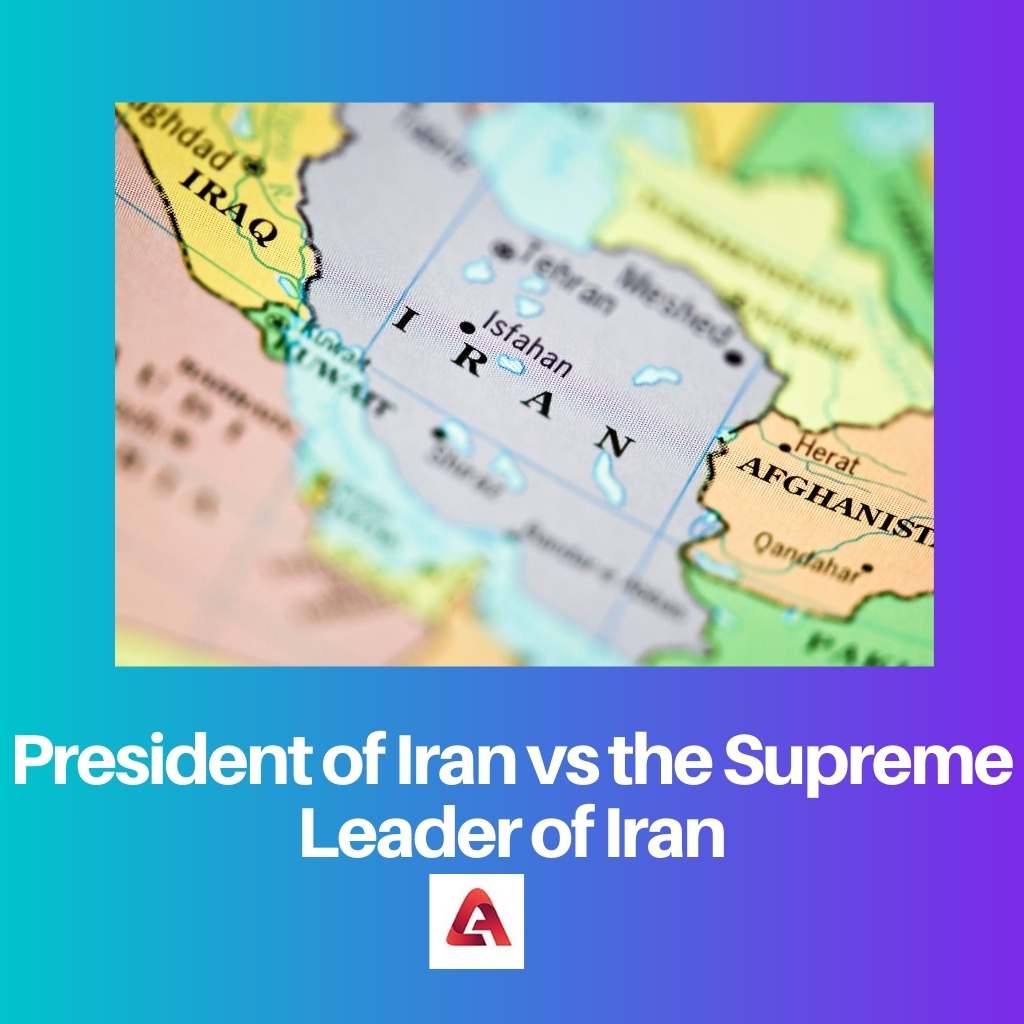Unveiling Iran's Dual Leadership: President Vs. Supreme Leader
**The Islamic Republic of Iran presents a fascinating and often perplexing political landscape, characterized by a unique duality of power that sets it apart from most modern states. At its core lies the intricate relationship between two pivotal figures: the President and the Supreme Leader.** Understanding the distinct yet intertwined roles of these individuals is crucial to grasping the complexities of Iranian governance, its internal dynamics, and its foreign policy trajectory. This article delves deep into the constitutional frameworks, practical powers, and qualifications that define the President and the Supreme Leader, illuminating the delicate balance—or imbalance—that shapes the nation's destiny.
Unlike conventional republics where the president typically serves as both head of state and government, Iran operates under a hybrid system that blends democratic elements with a profound theocratic oversight. This distinctive structure gives rise to a dynamic where the popularly elected President functions as the head of government, while the unelected Supreme Leader holds the ultimate authority in both political and religious spheres. This inherent tension and cooperation between the two offices are central to Iran's political identity, influencing everything from daily domestic policies to critical international decisions.
Table of Contents
- Iran's Unique Political System: A Theocratic Republic
- The Supreme Leader: Unrivaled Authority and Visionary Guide
- The President: Elected Head of Government and Public Face
- Constitutional Roles: A Direct Comparison
- Checks and Balances: The Theocratic Overhang
- Influence on Foreign Policy and National Security
- The Electoral Process and Public Mandate
- The Interplay of Power: Practical Realities and Future Trajectories
Iran's Unique Political System: A Theocratic Republic
The Islamic Republic of Iran stands as a distinctive entity on the global political stage. It possesses the trappings of a republican system, complete with elections, a parliament, and a president, yet it simultaneously maintains the absolute rule of an elite revolutionary Islamic council. This unique blend, often described as a theocratic republic, is precisely why the country has a sitting president and a supreme leader at the same time. This dual leadership model, established after the 1979 Islamic Revolution, sought to reconcile the revolutionary ideals of Islamic governance with the modern concept of a republic. The system is designed to ensure that all state functions and policies align with Islamic principles, as interpreted by the clerical establishment.The Supreme Leader: Unrivaled Authority and Visionary Guide
At the very pinnacle of Iran's power structure is the Supreme Leader, a figure whose authority transcends all other governmental branches and officials. Officially called the Supreme Leadership Authority, and also referred to as the Supreme Leader of the Islamic Revolution, this individual is the head of state and the highest political and religious authority of Iran, positioned definitively above the president. The post was instituted as Rahbar (“leader”) in 1979 with the creation of Iran’s Islamic Republic, which blends democratic elements with theocratic oversight from Islamic clerics of the Twelver Shiʿi sect. The current Supreme Leader, Ayatollah Ali Khamenei, succeeded Ayatollah Ruhollah Khomeini, the father of the Iranian Revolution, upon Khomeini's passing. His role is not merely ceremonial; he oversees virtually all functions of government, either directly or indirectly.Qualifications and Selection of the Supreme Leader
The qualifications for the Supreme Leader are outlined in the Iranian Constitution, emphasizing religious scholarship, political acumen, and moral rectitude. The individual must be a just and pious faqih (an expert in Islamic jurisprudence), capable of providing leadership, and possessing sufficient administrative skills. The selection process is unique: the Supreme Leader is chosen by the Assembly of Experts, an 88-member body of high-ranking clerics who are themselves popularly elected. Once appointed, the Supreme Leader holds the position for life, unless he is deemed unable to fulfill his duties by the Assembly of Experts. This lifetime tenure underscores the immense power and stability associated with the office, making it the ultimate arbiter of state affairs.The Expansive Powers of the Supreme Leader
The powers vested in the Supreme Leader are vast and far-reaching, encompassing virtually every aspect of national life. These include: * **Commander-in-Chief of the Armed Forces:** The Supreme Leader holds ultimate authority over the military, including the regular army, the Islamic Revolutionary Guard Corps (IRGC), and the Basij militia. This power extends to declarations of war and peace. It was the Supreme Leader who authorized Iran’s recent decision to launch hundreds of drones and missiles at Israel in retaliation for a suspected Israeli attack on its consulate in Syria. * **Appointment and Dismissal of Key Officials:** He directly appoints the head of the judiciary, the commanders of the armed forces, and the heads of various powerful state organizations, including state media. Ejhi, for example, was appointed directly by the Supreme Leader, and his role is as much political as it is legal. * **Setting General State Policies:** The Supreme Leader defines the general policies of the Islamic Republic, which all other branches of government must follow. This includes economic, social, cultural, and foreign policies. * **Final Say on Major Decisions:** Any major national decision, from foreign policy stances to the nuclear program, ultimately requires the Supreme Leader's approval. This makes him the ultimate decision-maker, often overriding the President's initiatives. For instance, while the new president's political stances could affect Iran's foreign policy and the nuclear program in the coming years, the final word always rests with the Supreme Leader. * **Oversight Bodies:** He directly or indirectly controls powerful oversight bodies like the Guardian Council and the Expediency Council, which play crucial roles in vetting legislation and candidates.The President: Elected Head of Government and Public Face
In contrast to the Supreme Leader, the President of the Islamic Republic of Iran is the highest popularly elected official in the country, functioning as the head of government. While the Supreme Leader is the highest authority, the President is the executive chief, responsible for implementing the constitution and executing the laws passed by parliament. The President is the public face of the Iranian government, representing the nation in international forums and leading the day-to-day administration. Iranians are going to the polls to elect a new president, following the death in May of the former incumbent, Ebrahim Raisi, highlighting the democratic aspect of this office.Qualifications and Election of the President
To qualify for the presidency, candidates must be of Iranian origin, Shi'a Muslim, a man, and possess administrative and managerial skills. They must also be trustworthy and pious. However, the path to the presidency is not solely determined by popular vote. All presidential candidates must first be vetted and approved by the Guardian Council, a powerful body whose members are directly or indirectly appointed by the Supreme Leader. This vetting process often narrows the field significantly, ensuring that only candidates deemed loyal to the principles of the Islamic Revolution are allowed to run. Despite this, the President's election by popular vote gives the office a significant degree of legitimacy and a direct mandate from the people.The Constitutional Powers of the President
According to Article 113 of the constitution, after the Supreme Leader, “the president shall be the highest state official responsible for the implementation of the constitution and, as the head of the executive branch.” The President's powers include: * **Head of the Executive Branch:** The President oversees the cabinet, appoints ministers, and implements government policies. * **Budget Formulation and Implementation:** The President is responsible for preparing and submitting the national budget to parliament and ensuring its execution. * **Foreign Policy Representation:** While the Supreme Leader sets the overarching foreign policy, the President conducts diplomacy, signs treaties, and represents Iran in international organizations. The president can gain lobbying power by determining who sits on Iran's Supreme National Security Council, which advises the Supreme Leader on security matters. * **Supervision of Government Agencies:** The President supervises the activities of various ministries and government agencies. * **Legislative Initiatives:** The President can propose legislation to the Majlis (parliament).Constitutional Roles: A Direct Comparison
To compare and contrast the roles, powers, and qualifications of the President and the Supreme Leader of Iran according to the constitution, it's essential to understand their hierarchical relationship. The President is the elected head of government and state, while the Supreme Leader is the highest authority in politics and religion. | Feature | Supreme LeaderArticle Recommendations



Detail Author:
- Name : Dr. Winfield Bartell II
- Username : williamson.amely
- Email : will.bonita@kirlin.com
- Birthdate : 1970-10-19
- Address : 266 Jerrell Underpass Suite 562 West Jailyn, DC 03081-2771
- Phone : 843-957-8877
- Company : Wintheiser-Sauer
- Job : Insurance Sales Agent
- Bio : Pariatur numquam porro distinctio et nihil dolorem eveniet debitis. Labore sed sequi facere non. Voluptatem harum rerum asperiores fugiat quidem voluptas.
Socials
twitter:
- url : https://twitter.com/kossp
- username : kossp
- bio : Beatae a vel in et ex itaque voluptate. Velit maxime minima doloremque. Mollitia amet perspiciatis maiores. Laborum fugiat et ut modi et repudiandae.
- followers : 2851
- following : 884
linkedin:
- url : https://linkedin.com/in/pearline5784
- username : pearline5784
- bio : Fuga repellat sit sapiente et.
- followers : 1156
- following : 2730
facebook:
- url : https://facebook.com/pearline.koss
- username : pearline.koss
- bio : Officiis laudantium maxime sed aut unde enim.
- followers : 5905
- following : 454
instagram:
- url : https://instagram.com/pearlinekoss
- username : pearlinekoss
- bio : Ea sed est vero in. Error inventore eveniet soluta commodi in minus omnis.
- followers : 1018
- following : 2765
tiktok:
- url : https://tiktok.com/@pearlinekoss
- username : pearlinekoss
- bio : Sequi earum blanditiis et consequatur. Aut nihil ut ut.
- followers : 160
- following : 1584